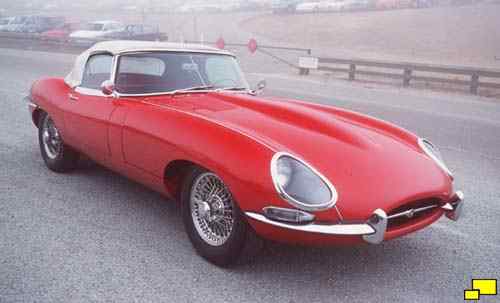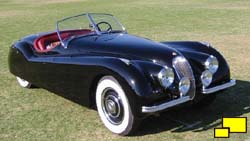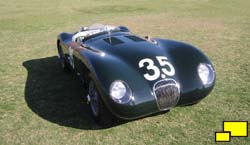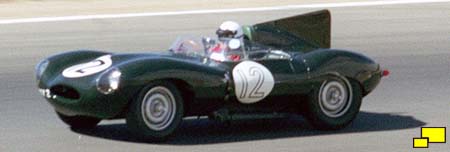
|
|
|
|
|
|
|
|
|
|
|
|
|
|
|
|
|
|
|
|
|
|
|
|
|
|
||||

|
||
| Photo courtesy of Neil Zlowzower |
- In its day it was extremely fast.
- It offered killer styling.
- It featured advanced technology.
- It held its own with high dollar exotics, yet the price was reasonable.

|
|
|
|
|
|
The Jaguar E-Type was officially introduced to the world in March 1961 in Geneva, Switzerland. The reaction was immediate and enthusiastic. The styling was partly responsible; the sensuous shape still gets rave reviews. The list of mechanical features was, for 1961, stunning: a double overhead cam engine, fully independent rear suspension and four wheel disc brakes (inboard at the rear no less, an exotic touch usually found only on race cars) proved the E-Type to be an advanced automobile. The price ($5,595 (£1,830) for the roadster) made the E-Type an exceptional bargain; the comparitively crude Corvette cost less but offerings from Aston Martin and Ferrari were considerably more. The future of the E-Type as an automotive classic was secured.
|
An Important Note ……
You may be more familiar with Jaguar's most revered sports car as having the name "XKE". Jaguar purists insist that the proper term is "E-Type", and all of the non-marketing literature from the factory referred to their popular two seater (and 2+2) as such. "XKE" has found its way into popular culture however. It is also a fact that the factory used the term in their sales efforts, so they can't be too offended by its use. At various times, even the terms "XK-Engineering" and "XK-Elegence" was employed. Here at WebCars! we are comfortable with both methods, although we use the term E-Type for consistency. |
|
(A new window will open in your browser)

|





